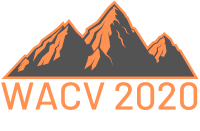-
Differentiable Scene Graphs
AbstractReasoning about complex visual scenes involves perception of entities and their relations. Scene Graphs (SGs) provide a natural representation for reasoning tasks, by assigning labels to both entities (nodes) and relations (edges). Reasoning systems based on SGs are typically trained in a two-step procedure: first, a model is trained to predict SGs from images, and next a separate model is trained to reason based on the predicted SGs. However, it would seem preferable to train such systems in an end-to-end manner. The challenge, which we address here is that scene-graph representations are non-differentiable and therefore it isn't clear how to use them as intermediate components. Here we propose Differentiable Scene Graphs (DSGs), an image representation that is amenable to differentiable end-to-end optimization, and requires supervision only from the downstream tasks. DSGs provide a dense representation for all regions and pairs of regions, and do not spend modelling capacity on regions of the image that do not contain objects or relations of interest. We evaluate our model on the challenging task of identifying referring relationships (RR) in three benchmark datasets: Visual Genome, VRD and CLEVR. Using DSGs as an intermediate representation leads to new state-of-the-art performance. The full code is available at https://github.com/shikorab/DSG.
Related Material
[pdf] [supp][bibtex]@InProceedings{Raboh_2020_WACV,
author = {Raboh, Moshiko and Herzig, Roei and Berant, Jonathan and Chechik, Gal and Globerson, Amir},
title = {Differentiable Scene Graphs},
booktitle = {Proceedings of the IEEE/CVF Winter Conference on Applications of Computer Vision (WACV)},
month = {March},
year = {2020}
}
These WACV 2020 papers are the Open Access versions, provided by the Computer Vision Foundation.
Except for the watermark, they are identical to the accepted versions; the final published version of the proceedings is available on IEEE Xplore.
Except for the watermark, they are identical to the accepted versions; the final published version of the proceedings is available on IEEE Xplore.
This material is presented to ensure timely dissemination of scholarly and technical work.
Copyright and all rights therein are retained by authors or by other copyright holders.
All persons copying this information are expected to adhere to the terms and constraints invoked by each author's copyright.

